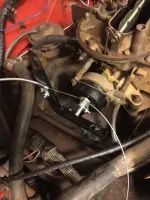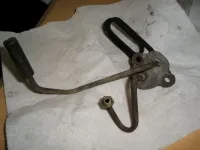Carb stove pipe plate...
007
Crazy Sr. Respected Jeeper
- Posts
- 3,451
- Media
- 5
- Solutions
- 1
- Thanks
- 64
- Location
- Reno, NV
- Vehicle(s)
- 1977 CJ-7 Renegade (Daisy Jane), Levis trim, 304, TH400, BW1339 (MM), D30/Auburn Max, AMC20/Detroit/G2's, 4.88's, 33" BFG MT KM2's, Edelbrock Performer intake, Holley Sniper 4bbl EFI, MSD6, MSD ProBillet distributor, OME shocks, 4" ProComp lift.
I have converted my carburetor to a manual choke. One of my stove pipes that heated the old choke was broke and the other was loose. I popped them off and make an fantastic bracket to hold my choke cable. Bracket was supposed to mount on the outermost stove plate bolt. Naturally I twisted the head off of it.
What are my options? What's underneath here? Can I just tack weld my bracket on the plate or is it ABSOLUTELY necessary that I get the bolt out, etc.?

Sent from my iPhone using Tapatalk
What are my options? What's underneath here? Can I just tack weld my bracket on the plate or is it ABSOLUTELY necessary that I get the bolt out, etc.?

Sent from my iPhone using Tapatalk


